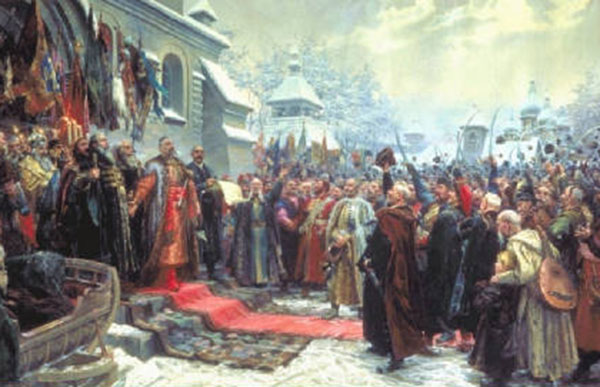Russia was not content to call its royal leader simply “king.” “Tsar” and “emperor” more accurately described the position of the supreme ruler of the Russian Empire.
Because Russian royal titles do not exactly correspond with English language royal titles, they sometimes require explanation.
Russian Royal Titles – Tsar
The word tsar is derived from the Roman word Caesar. Peter the Great was the first Russian ruler to dispense with the more traditional Russian royal title tsar and call himself “emperor.” As the Russian Empire grew, however, so did the title of the ruler. Tsar just happened to be an easy, catch-all title for the Russian emperor. For example, Nicholas II of Russia, the last tsar, held a title that was as large and unwieldy as the Russian Empire itself:
Emperor and Autocrat of All the Russias; Tsar of Moscow, Kiev, Vladimir, Novgorod, Kazan, Astrakhan, Poland, Siberia, the Tauric Chersonese and Georgia; Lord of Pskov; Grand Prince of Smolensk, Lithuania, Volhynia, Podolia, and Finland; Prince of Estonia, Livonia, Courland and Semigalia, Samogatia, Belostok, Karelia, Tver, Yugria, Perm, Viatka, Bulgaria and other lands; Lord and Grand Prince of Nizhnyi Novgorod and Chernigov; Ruler of Riazan, Polotsk, Rostov, Yaroslavl’, Belo-Ozero, Udoria, Obdoria, Kondia, Vitebsk, Mstislavl, and all the Northern Lands; Lord and Sovereign of th iverian, Kartalinian and Karbadinian lands and of the Armenian Provinces; Hereditary Lord and Suzerain of the Circassian Princes and Highland Princes and others; Lord of Turkestand; Heir to the throne of Norway; Duke of Schleswig-Holstein, Stormarn, the Dithmarschen and Oldenburg.
Tsar has also been spelled czar, but tsar more accurately renders the word as it is pronounced in Russian.
Russian Royal Titles – Tsaritsa or Tsarina
The tsaritsa or tsarina was the royal consort of the tsar. Empress Alexandra Fyodorovna was called the tsaritsa or tsarina (however, the latter version of the word does not correspond with the Russian word, and seems to be an anglicized version of tsaritsa). The Russian word korolyeva is the word for “queen,” so even the Russian tsaritsa was something other than queen. However, Alexandra Fyodorovna was often simply referred to as “that German woman,” because of her socially distasteful German heritage.
Russian Royal Titles – Tsarevich
The tsarevich was the son of the tsar. Tsarevich Alexei was the son of Nicholas II, but also the heir apparent to the throne. The heir apparent carried a slightly different title according to Russian royal title tradition – tsesarvich. While a tsarevich may be similar to a prince, he is most commonly referred to as the “grand duke.”
Russian Royal Titles – Tsarevna or Grand Duchess
Nicholas II’s daughters were known as grand duchesses, but if translated from the Russian, “grand princesses” might be more accurate. Grand duchesses were daughters of the tsar.
Russian royal titles have changed throughout the centuries, both in meaning and in usage. In addition, Anglicization of the words has also caused them to be modified in the English-speaking world. Unfortunately, their definitions do not exactly correspond to English royal titles like “king,” “queen,” “prince,” and “princess.” Russia’s long tradition of social rank has seen to it that the Russian royal titles would be distinctive and above all other titles in the empire.








